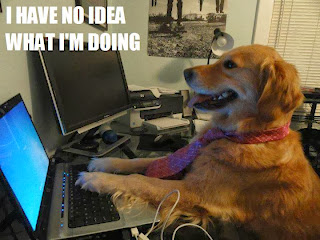The first meditative experience I had was not called
meditation at all.
The school where I spent my fifth through twelfth grade
years sent each class to camp for a week during the year. Fifth graders went one week, sixth another,
etc. Each year we went we learned some
new skill or had some new emphasis – low ropes, high ropes, rock climbing,
rafting, orienteering. Much of the
experience was not meditative. Learning
the skills was rigorous physical and mental effort (that I still use
today). Many of my classmates had little
to no interest in being there – the younger ages brattier and the older ages
more sullen, each painfully inconvenienced by the primitive isolation. I, on the other hand, and many of my good
friends, ate it up. I’d always wanted to
go to camp (thank you, YA fiction, Salute Your Shorts, and The Parent
Trap). I loved hiking, mud, not having a
television, being cold and tucking into a mummy wrap sleeping bag.
One activity we did each year, without fail and without
regard to whatever other skill we were developing that particular week, was to
go on solos. Basically, we would hike as
a group to a reasonably remote spot (remote = not on a trail just walking
straight out into the woods (in a park where there weren’t rules where you had
to stick to a trail), where we were unable to hear or see a highway
or any other people). Then the counselor
would have us scatter about so we were no closer than 40-50 feet from the
nearest person, and sit. We’d just sit
there in the woods and then after a certain amount of time, the counselor would
blow a whistle and we’d reconvene and hike back. Sometimes we’d have a journal to write in,
but mostly we just sat there, safely alone in the woods. Instructions: just sit.
No one explained that it was meditating. No one told us what to do or think, except
that we were just to sit there and not talk.
We could do whatever we wanted while we were there. What do you do in that situation? You either think about things, or you
observe. And given enough time, you
start to observe out of the boredom of your own thoughts. There’s much to see and hear and touch
sitting out in the woods. And so, as the
time wore on, you became more and more mindful of the experience of being
alone, sitting quietly with your brain, observing yourself and your
surroundings. You started meditating as
naturally as it really is to do so, without naming it, without trying. It was beautiful and simple, quiet and transformative.
Also, no one explained that it was relatively rare in this modern age and area of the world to be able to be alone
in the woods (people who live in the woods notwithstanding). It seems like a lot of
parks have a ‘don’t go off the trail’ rule (and for good reason), but this park
had no such rule and in fact had no trails.
It was all back country, all traipsing around. You really got a feel for the landscape and
learned to notice the shape of the woods and waterways as visual landmarks,
rather than sticking to a clean trail.
You weren’t really trying to go anywhere (to the top, to the lake, to
the view, etc.), you were just enjoying the woods, then enjoying them
alone. Even now, if I can find a trail
that is mostly people-less, rare if ever is the time when I’m not with a few of
my own compatriots (lest I end up having to cut my own arm off or some equal
disaster sure to befall me if I go hiking alone…).
I think these lovely formative experiences have colored my
reactions to hikes and woods. The
biggest issue is: the more crowded a hike is, the less I like it. Rattlesnake Ridge was the most crowded hike
I’ve ever been on. It was nearly a
nonstop stream of people, and when you got to the very nice overlook, there
were so many people there was almost nowhere to sit or stand to take in the
view. It is for this reason that I do
not recommend this hike – or that if you go on this hike, you do it when it’s
colder but not raining, as the view is the point, and if there’s too much cloud
cover or rain you probably won’t get the payoff.
The thing about the Northwest is, you don’t have to do an
uncomfortable crowded hike, because there are many hikes that have spectacular
views that aren’t overstuffed. I recommend
one of the other hikes mentioned on this blog, or not yet on this blog that
doesn’t describe itself as ‘popular’. If
you do not mind crowds, are invigorated by shared experiences, this could be up
your alley, and it does have attractive views.
I will be on a trail where I can sit idly and forget that anyone is
around (if they even are).





